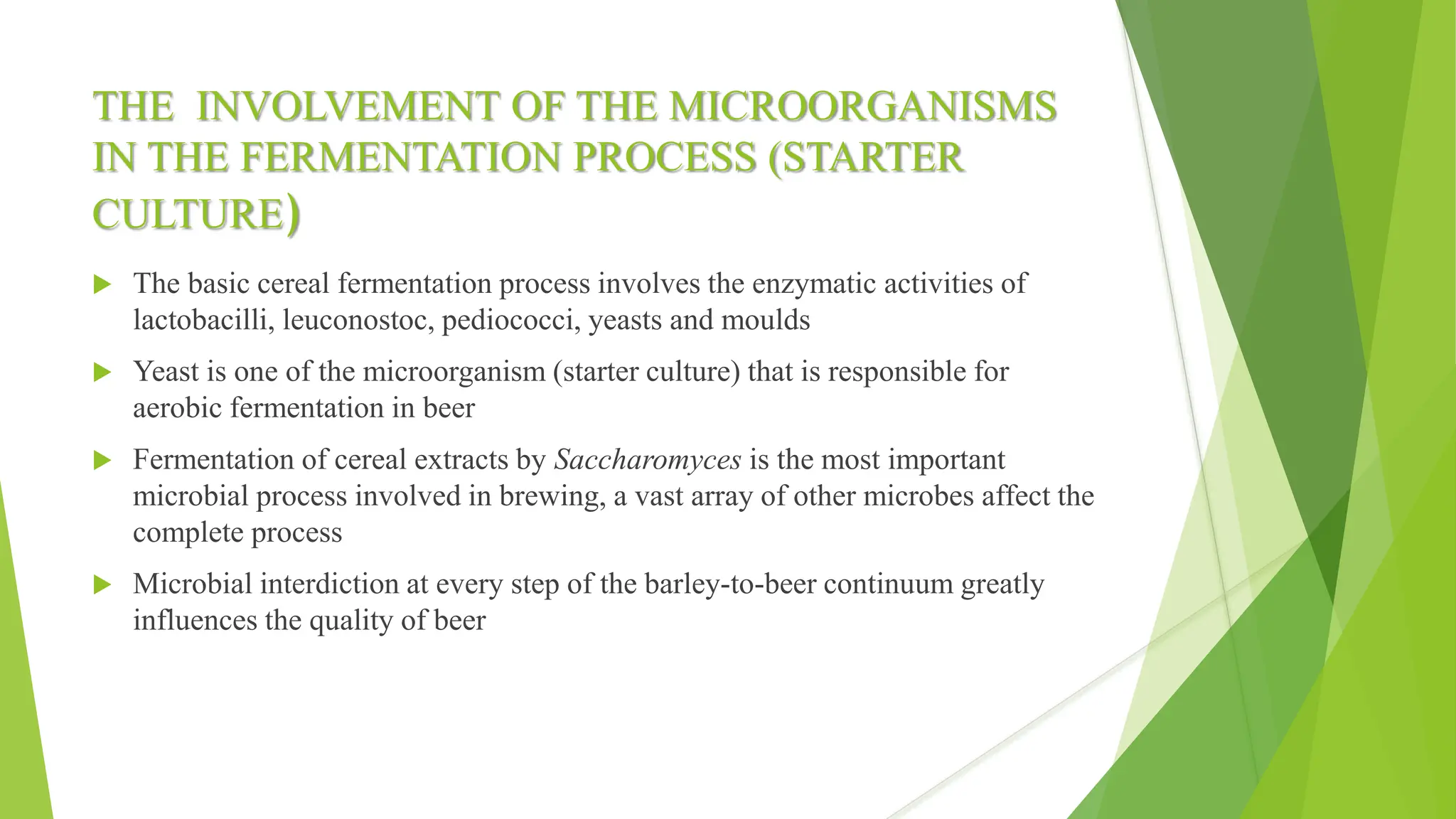Microorganisms play an essential role in the fermentation of cereals like barley to produce beers and other fermented products. Yeast is the primary microorganism involved in the beer fermentation process, converting the sugars in barley wort into alcohol and carbon dioxide. Other microbes like bacteria and fungi can also influence the process and impact final quality and safety. Careful control of the microbial cultures used in fermentation is necessary to consistently produce high quality, safe beer and prevent potential spoilage.












